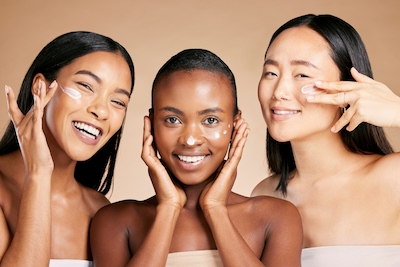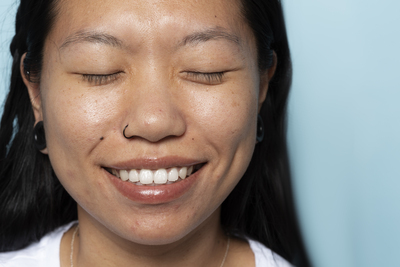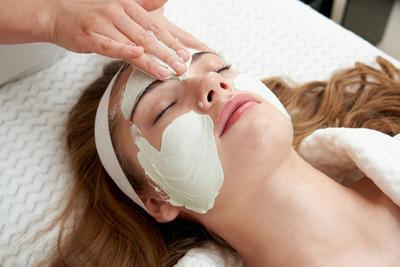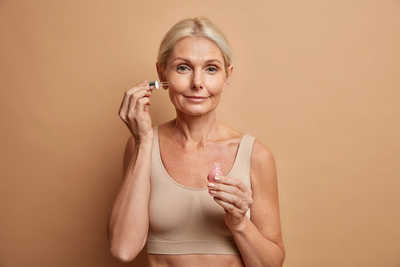Is Your Concealer Breaking You Out? What to Know About Comedogenic Ingredients
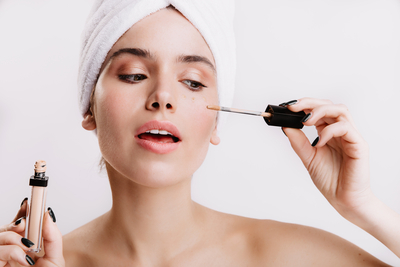
You apply your concealer thinking it’s covering a stubborn blemish, but what if it’s causing one? For many people with acne-prone skin, concealer (and other makeup) can contain ingredients that clog pores, irritate follicles, or trigger “acne cosmetica”. In this post, we’ll explore:
-
What “comedogenic” means
-
Common pore-clogging ingredients found in concealers
-
How to choose a concealer that’s safer for acne-prone skin
-
How SkinBuddy helps you spot problem ingredients
-
FAQs and final recommendations
What Does “Comedogenic” Mean?
“Comedogenicity” refers to the potential of a substance to cause comedones — clogged pores manifesting as blackheads or whiteheads. Historically, many ingredients have been tested in rabbit-ear assays to grade how likely they are to clog pores.
One recent review in cosmeceuticals re-examines how comedogenic testing is used in formulation today, emphasizing that labeling something “non-comedogenic” doesn’t guarantee it won’t clog pores in every skin type.
In fact, a case-control study showed that the use of cosmetics (including foundations, powders, and concealers) containing comedogenic ingredients was statistically associated with a higher risk of acne among participants. This study found that cleansers and foundations with pore-clogging ingredients were linked to increased acne risk.
So yes, concealer can break you out if it contains the wrong ingredients.
Common Concealer Ingredients That Could Clog Pores
Below are ingredient types often found in concealers that may be problematic for acne-prone skin:
| Ingredient Type | Examples | Why It May Be Trouble |
|---|---|---|
| Heavy oils & butter | Coconut oil (Cocos Nucifera), cocoa butter, shea butter | These substances score high in many comedogenicity tests |
| Fatty acid esters / isopropyl esters | Isopropyl myristate, isopropyl palmitate | Known to clog pores and commonly used in makeup to improve slip |
| Silicones with occlusive effects | Dimethicone (in high concentrations) | Though often tolerated, in heavy layers they may trap debris |
| Lanolin derivatives | Acetylated lanolin alcohol, lanolin | Can be highly comedogenic depending on formulations |
| Waxes | Beeswax, candelilla, carnauba | In dense formulations, waxes may block pores |
| Certain alcohols or fatty alcohols | Cetyl alcohol, stearyl alcohol (when in high concentrations) | May contribute to occlusion in some formulas |
A widely cited resource on comedogenic and irritant potentials of ingredients references many of these compounds and ranks them by their pore-blocking risk.
However, it’s important to note: the concentration, formulation, and vehicle (how the ingredient is delivered) matter a lot. One ingredient may be comedogenic in high concentrations but safe in small amounts or when formulated carefully.
Signs Your Concealer May Be Bringing You Breakouts
-
New little bumps (whiteheads or tiny papules) in areas where you apply concealer
-
Breakouts clustered where you apply cream-based makeup (under eyes, around nose)
-
Breakouts that don’t clear even with adjustments to your skincare
-
Pores feeling blocked or heavy under makeup
If you notice these, it’s time to examine the ingredient list — and possibly rethink your concealer.
Choosing a More Acne-Safe Concealer
Here are tips to help you pick concealers less likely to exacerbate breakouts:
-
Look for “non-comedogenic” labels, but don’t trust them blindly — always check ingredients.
-
Avoid top ingredients known for high comedogenic risk (see list above).
-
Lightweight formulations (liquid or serum versions) tend to clog less than thick creams.
-
Mineral concealers (with oxides like titanium dioxide, iron oxides) often have lower clogging risk.
-
Patch test new products behind the jawline for a few days before full use.
How SkinBuddy Helps You Avoid Breakout-Causing Concealers
We built SkinBuddy to make ingredient detective work easier — especially when you suspect your makeup is causing acne.
- When you scan any concealer, SkinBuddy highlights ingredients known to be comedogenic or potentially pore-clogging.
- If your skin profile has Acne-Prone Skin selected, products containing those ingredients automatically get lower ratings.
- For each flagged ingredient, you can tap to see why it's considered risky and what safer alternatives exist.
- In Discover Ideal Match, you can filter your makeup results to only show non-comedogenic or low-risk formulas.
- This way, you can find concealers that correct imperfections without hiding new breakouts.
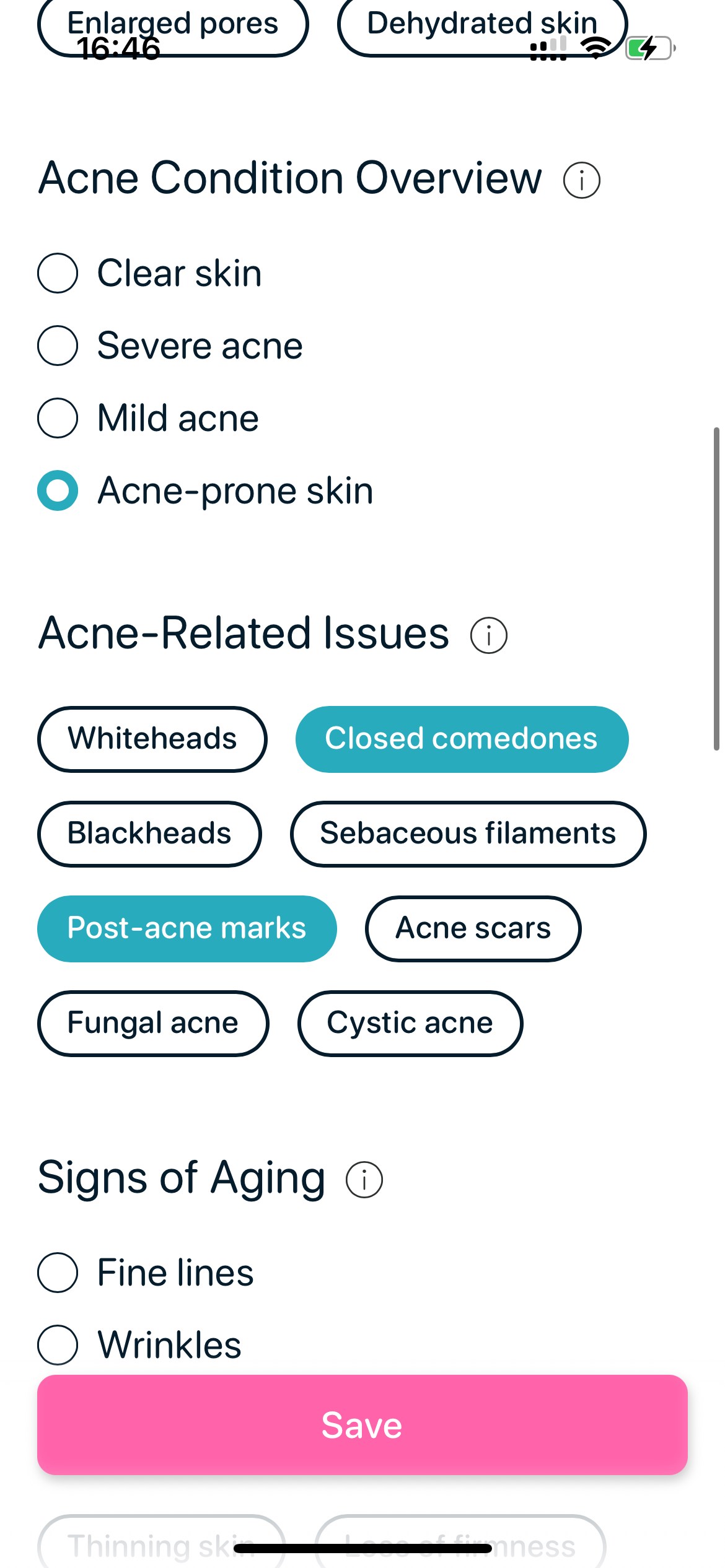
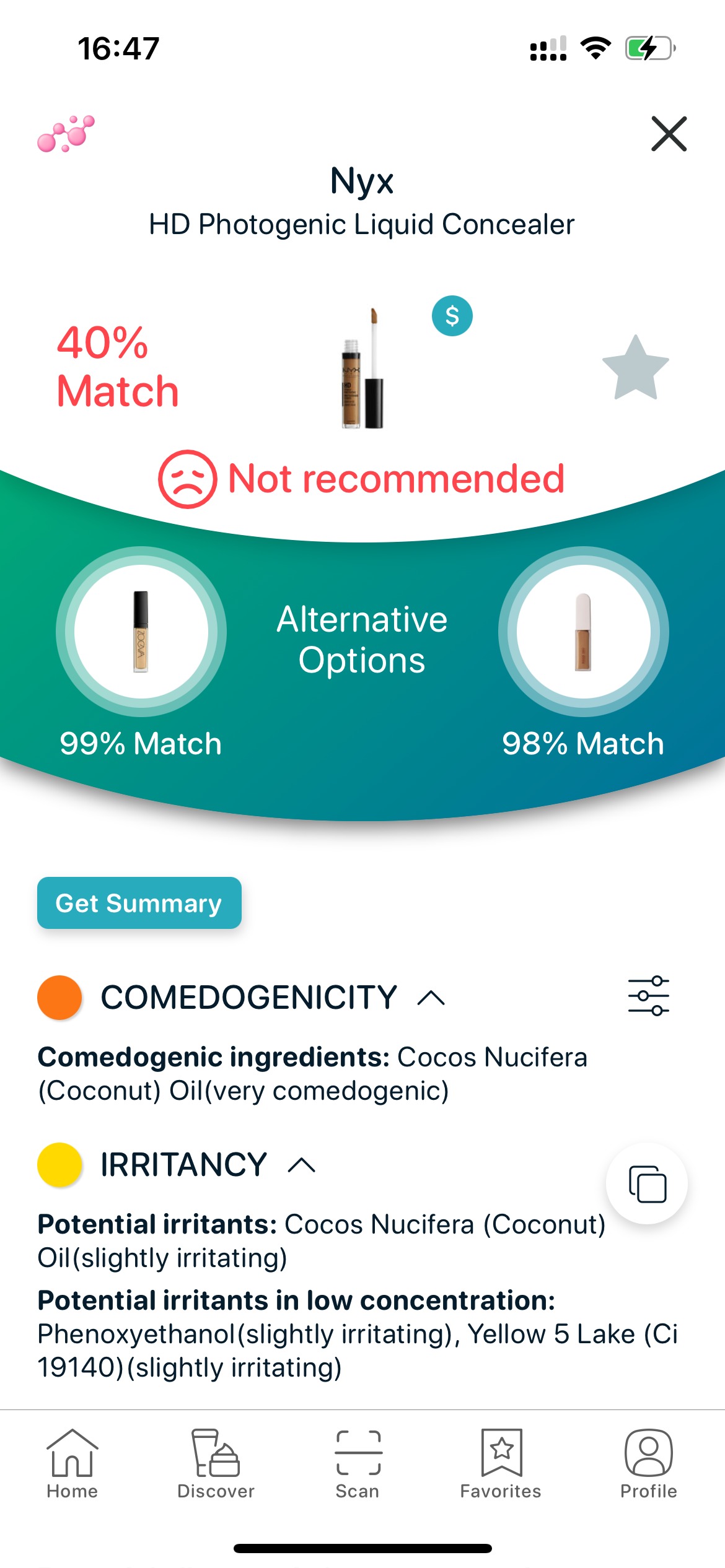

Try SkinBuddy to find out what works for your skin, and what doesn’t.
Scan your skincare, avoid pore-clogging or irritating ingredients, and discover smarter product matches. Open the web app or download the mobile app to get started.
Open SkinBuddy Web Appor
Check if your skincare suits your skin type, sensitivity, or acne-prone needs at skinbuddy.app and discover better options that match your routine and goals. SkinBuddy makes it easy, fast, and science-backed.
Scan to get started:

Web App (mobile only)

App Store & Google Play
FAQs
-
Can any concealer break out acne-prone skin?
Yes, even concealers marketed as “oil-free” or “non-acnegenic” can contain hidden pore-clogging ingredients. -
Are mineral concealers always safe?
Not always. While mineral pigments tend to be safer, they can still include occlusive binders or silicones that may clog pores in some people. -
What’s the best way to apply concealer to minimize breakouts?
Use minimal amounts, apply with clean brushes or fingers, avoid layering heavily, and remove makeup thoroughly at night. -
Should I stop using concealer during a breakout?
Switch to gentler, non-comedogenic formulas during flare-ups. Sometimes a short break helps skin recover. -
Can formulation changes make a formerly safe concealer break out?
Yes, formulations change, so re-check ingredient lists even for longtime favorite products.
Final Thoughts
Your concealer can be more than your cover — it could also be covertly contributing to your breakouts. Many makeup formulas use comedogenic oils and esters to improve spread and opacity, but for acne-prone skin, they may do more harm than good.
The good news: you don’t have to give up concealer entirely. With careful ingredient reading (or using tools like SkinBuddy), you can choose formulas that hide imperfections without begging new breakouts into existence.
👉 Ready to see if your concealer is sane or sabotage?
Download the SkinBuddy app and scan your makeup now — we’ll highlight risky ingredients, suggest safer alternatives, and help you make a smarter choice.


